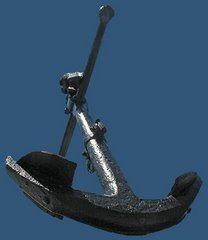The pictures of the model of
Nonsuch that were posted here earlier and the ebony parts from it are all that remain of that model. The builder decided he didn't like it, and said that he put it on the floor and crushed it under his boot.
The intent to make a black and white ship model was thwarted. When the ebony parts were put in place and sanded to their finished size, the black dust from the sanding got into the pores of the holly where it was then impossible to remove it.
There is a silver lining in this cloud. We get to see the construction method in better detail.

Here you can see the hull of the ship taking shape on the plug that has been carved to the inside dimension of the frames. The frames above the bilge line have had filler added between them, to strengthen them when it comes time to cut out the holes for the gun ports and scuppers. This filler will be covered up when the hull is planked.

In this top view you can see the plug as it has been cut into five sections. The centre part on the top is held in place with spacers on either side. The plug's extension well above the gunwale allows the plug and hull assembly to be held in a vise, which makes working on the hull much easier. The dowels extending from the sides are used to index the parts of the plug.
When the centre part is removed, the middle fore and aft parts can then move away from the bow and stern. When they are removed the two side pieces can then be removed.

This is the keel part, which is held in place temporarily with pins. In the final assembly the various parts will be glued permanently. The hull above the keel is pinned and comes apart in two halves. In the final assembly they will be glued as well.

In the final picture you can see that the tops of the frames are uneven. They will be evened out later. When the holly parts have been finished and before the next step of working with the ebony parts, the hull will get a thin coating of a clear flat varnish to seal the pores.
 Shown here are some of the windows being made for the model of HMS Bounty. As we now have two models of Bounty residing on this site, the Bounty these windows are for is the one shown in the post titled, 'Earlier pictures of HMS Bounty.'
Shown here are some of the windows being made for the model of HMS Bounty. As we now have two models of Bounty residing on this site, the Bounty these windows are for is the one shown in the post titled, 'Earlier pictures of HMS Bounty.'





















